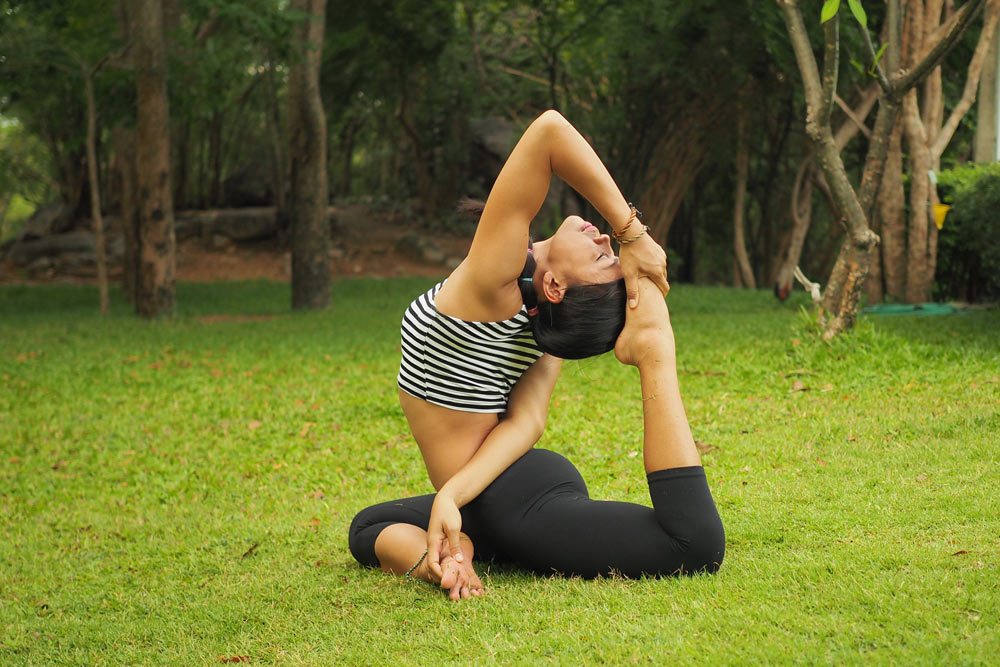

I am often asked how I manage to balance my life working full time in a traveling sales job, caring for my children, keeping on top of housework, practicing yoga, teaching yoga, designing websites, blogging, participating in new teacher training’s and the list just goes on and on!
I have always had a busy life but I cannot say I have had a low stress life, that is until I started practicing Yoga. Balance is by definition a physical state. Thanks to yoga, I can balance on my head and in various yoga postures, but does that have any bearing when balancing life? I believe it does and here is why:
1. Reduced Stress
One of the key elements of yoga is pranayama or breath control. Normal breathing is automated by the sympathetic nervous system which is also responsible for the “fight or flight” response which helps keep you out of danger. When you take control your breath, you access your parasympathetic nervous system which is responsible for rest, relaxation and digestion. This switch to parasympathetic has a calming effect and helps to reduce stress levels.
2. Improved Focus
Each posture (asana) has a point of focus (Drishti) for example: tip of nose, fingers, toes etc. When the eyes wander, the mind wanders. By maintaining a single point of focus you can more easily maintain focus in the mind.
3. Improved Health
A typical yoga class will involve moving the spine and joints in all directions. Left and right, front and back. The body stretched and worked to help create strength and maintain flexibility. Each movement is coupled with a breath promoting movement and flow within the body helping to maintain good health.
4. Increased Well-Being
Most yoga classes involve some form of relaxation and typically end with Savasana; a pose where you lie down on your back and relax. For me, this brings about a deep feeling of well-being. It is an opportunity to let go completely of any remaining tension in the body and to release any negative thoughts in the mind.
5. The Calm Within The Storm
Of course, not all forms of yoga are the same. I teach and practice both active and passive forms of yoga. With Yin yoga, the focus is on passive stretching of the connective tissue within the body; the fascia. In order to stretch the fascia, a practitioner must find “the edge”,; that uncomfortable place between comfort and pain. From this place, you must relax as much as possible and hold for three to five minutes. The mind can get very loud when you hold an uncomfortable position. Staying calm and relaxed when the mind is loud can help you to remain calm and centered when in a difficult situations elsewhere in your life.
6. Equanimity
By practicing both active and passive forms of yoga, your body and mind are worked, challenged and relaxed in different ways bringing balance and benefits that help maintain equanimity. This equanimity translates forward into balance in life.
What you do on your yoga mat carries forward when you are off the mat. The translation of these benefits of yoga into everyday life make it easy for me to stay present and aware in each moment allowing life to flow effortlessly and blissfully along. With yoga in my life, I am more likely to remain calm in the face of a storm and I have the added benefit of being able to balance on my head!

